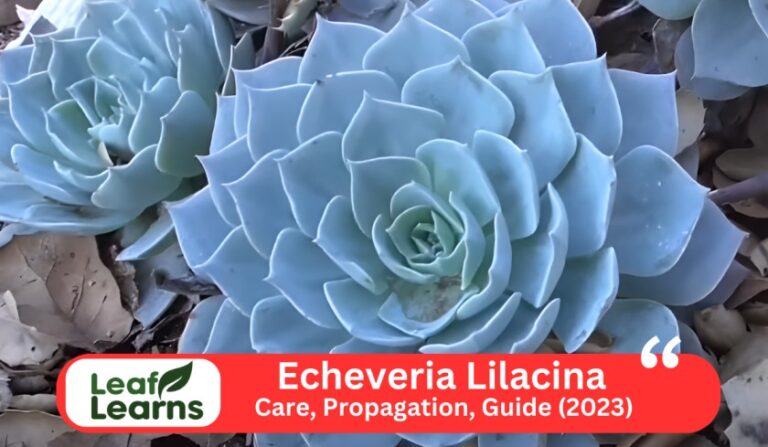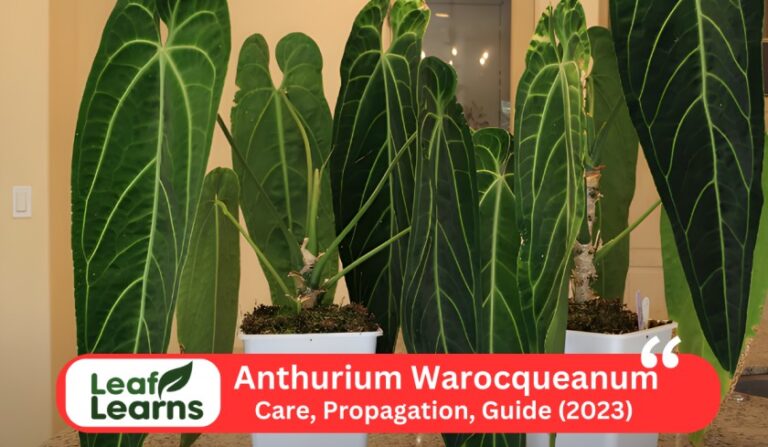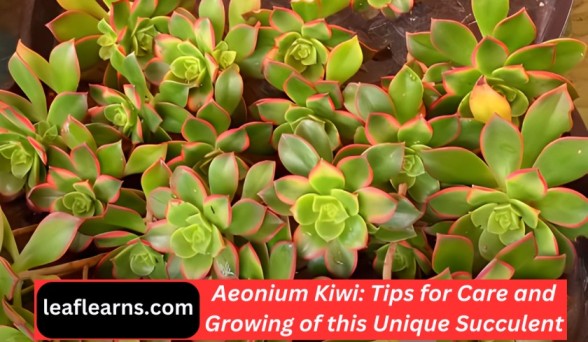Philodendron White Princess Care, Propagation, Guide (2023)
An amazing member of the Araceae family known as The Philodendron White Princess (White Princess) is highly regarded for its beautiful variegated leaves that combine pure white and lush green. The normal height of this evergreen houseplant, which rarely produces inconspicuous flowers and has medium-sized, heart-shaped leaves, is between one and two feet.

Contents
- 1 Characteristics
- 2 What is Philodendron White-Princess
- 3 What’s Unique About Philodendron White Princess?
- 4 Top Care Tips
- 5 Care for Philodendron White Princess
- 6 How to Propagate Philodendron White Princess
- 7 Pruning
- 8 How to Repot of Philodendron White-Princess
- 9 How to Get Philodendron WhitePrincess to Bloom
- 10 Growth Rate and Size
- 11 Flowering and Foliage
- 12 Philodendron White-Princess Appearance
- 13 Philodendron WhitePrincess Fragrance
- 14 Philodendron white princess vs white wizard
- 15 Philodendron white-princess vs white knight
- 16 Underwatering
- 17 Overwatering
- 18 Overwintering
- 19 Common Pests
- 20 Plant Diseases
- 21 Problems and Solutions
- 22 Toxicity of Philodendron White-Princess
- 23 Varieties/Types
- 24 Uses of Philodendron White-Princess
- 25 White Princess Philodendron: A Unique Indoor Plant
- 26 White Princess Philodendron: Tips Guide for Healthy Growth
- 27 Conclusion
- 28 FAQs
Characteristics
It requires bright, indirect sunshine and a well-drained, nutrient-rich potting mix for optimal growth. Maintain a temperature range of 65-80°F (18-27°C) and high humidity levels to maintain this amazing plant alive.
You can provide it with a balanced liquid fertilizer, but you must be mindful that it has a low toxicity level if consumed. Its size and shape may be regulated by pruning, and stem cuttings or air layering can be used for propagation.
Aphids and mealybugs must be checked out for possible pests. A beautiful ornamental indoor plant known as the White Princess may give a feeling of luxury to any living area. So in this article I will tell you all about the beautiful philodendron white princess plant:
| Common Name | White Princess |
| Scientific Name | Philodendron WhitePrincess |
| Family | Araceae |
| Origin | Hybrid (Exact origin varies) |
| Plant Type | Evergreen houseplant |
| Size | 1-2 feet tall |
| Leaf Colour | Variegated; green and white |
| Leaf Size | Medium-sized, heart-shaped |
| Flower Colour | Rarely flowers, inconspicuous |
| Light | Bright, indirect sunlight |
| Water | Allow the top inch of soil to dry |
| Soil | Well-draining, rich potting mix |
| Temperature | 65-80°F (18-27°C) |
| Humidity | High humidity preferred |
| Fertilizer | Balanced liquid fertilizer |
| Toxicity | Mildly toxic if ingested |
| Pruning | Prune to control size and shape |
| Propagation | Stem cuttings, air layering |
| Pests | Susceptible to mealybugs, aphids |
| Uses | Decorative indoor plant |

What is Philodendron White-Princess
The evergreen houseplant Philodendron WhitePrincess is a favorite for interior decorating because of its eye-catching variegated leaves, which come in a mix of green and white. It normally grows to a height of 1-2 feet and requires little care.
What’s Unique About Philodendron White Princess?
The Philodendron WhitePrincess is an eye-catching and popular houseplant because of its beautiful variegated leaves, which have a combination of green and white.
It is a preferred option among plant aficionados due to its distinctive look and simple maintenance needs.
Top Care Tips
Light Requirements: Bright, indirect light is ideal for Philodendron White-Princess growth. To keep its brilliant leaves, put it close to a window with filtered sunlight.
Watering Schedule: Don’t overwater your White Princess. Between waterings, let the top inch of the soil dry to prevent the plant from sitting in wet soil, which can cause root rot.
Humidity Control: Keep the air humid since this plant prefers greater humidity levels. Its leaves can avoid becoming brown by receiving regular misting or by using a humidifier.
Pruning and Maintenance: Trim dead or yellowing leaves occasionally to promote new development and preserve the plant’s visual appeal. A White Princess who is well-groomed is also healthy.
Fertilization: During the growing season (spring and summer), give your White Princess a balanced dose of water-soluble fertilizer every four to six weeks. Don’t overfertilize plants because this might cause damage.
Care for Philodendron White Princess
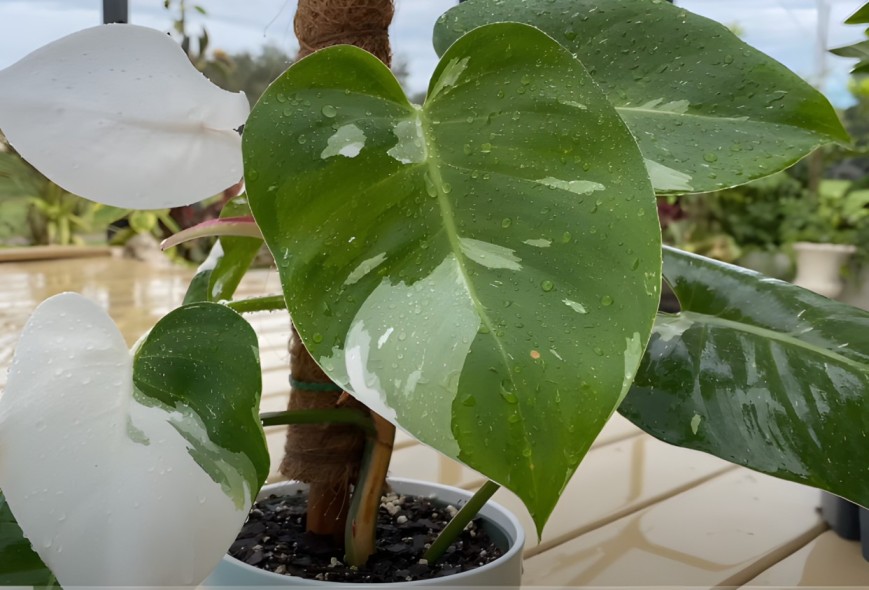
Light Requirement
It’s essential to fulfill the light needs of your Philodendron White-Princess in order to care for it. This plant does best in direct, bright light. Put it near a window that lets in filtered light.
As intense, direct sunlight can burn the leaves, stay out of it. Your White Princess will remain healthy and beautiful with the right illumination.
Water Requirement
Understanding the water requirements of your White Princess plant is essential to ensuring its success. The soil of this classy houseplant loves to partially dry out in between waterings.
Use only a small amount of water, letting the top inch of the soil dry before rehydrating. Overwatering might cause root issues, so keep it on the drier side to keep your White Princess healthy.
Soil Requirement
Pay close attention to the soil needs of your White Princess plant to ensure its success. Use a potting mix that drains properly and is enriched with organic stuff.
To avoid root rot, the soil should enable extra water to drain. The ideal environment for this gorgeous indoor plant’s development is balanced, airy soil.
Temperature Requirement
Take into account the temperature needs of your White Princess plant when taking care of it. Keep your plant in a cozy space that is 65 to 80 degrees Fahrenheit (18 to 27 degrees Celsius).
Keep it away from extremely cold or hot temperatures since they might stress the plant. Your White Princess will thrive and remain healthy if the proper temperature range is maintained.
Humidity Requirement
Make sure the appropriate humidity levels are present for your Philodendron White-Princess. The ideal humidity for this plant is medium.
Using humidifiers or misting to keep the air wet is one way to do this. Your indoor garden becomes a vivid, attractive retreat when the humidity is just right to maintain the health of its luscious pink leaves.

Fertilizer Requirement
You need to use the proper fertilizer to maintain the health of your Philodendron White-Princess. Every four to six weeks, during the plant’s active development periods in spring and summer, apply a balanced water-soluble fertilizer.
This guarantees that the plant receives the nutrients it needs for luxuriant development without overfeeding it. For a White Princess to thrive, proper fertilizer maintenance is essential.
Potting Requirement
Understanding the potting requirements of your Philodendron-White Princess is essential to its care. To avoid soil that is flooded with water, use a pot that drains well and has enough drainage holes.
To supply vital nutrients, use a high-quality, peat-based potting mixture. Make sure the pot is the right size; a tight fit promotes healthy development.
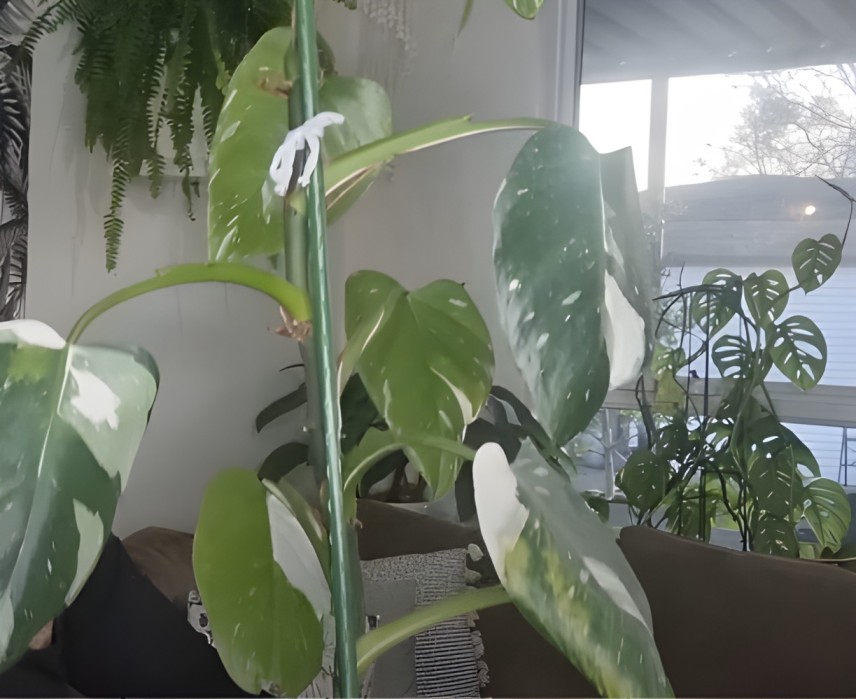
How to Propagate Philodendron White Princess
Select Healthy Cuttings: Start by selecting stems for propagation that are sound and free of disease, making sure they contain a few leaves and nodes.
Prepare Cuttings: Use tidy, well-kept scissors or pruning shears to trim the stems slightly below a node.
Rooting Medium: Put the cuttings in a peat-perlite or other well-draining potting mix. Select a compact container with excellent drainage.
Maintain Humidity: To establish a humid climate, cover the container with a plastic bag or propagation case.
Provide Indirect Light: Don’t expose the container to direct sunlight; instead, place it in filtered, indirect light.
Wait Patiently: Be patient; it may take several weeks for the cuttings to develop roots.
Transplanting: Transplant the cuttings into individual pots with an appropriate potting mix after the roots are well-established.
Pruning
An essential part of caring for your Philodendron White-Princess is pruning it. To promote new growth and preserve its pleasant look, this method entails removing dead or yellowing leaves.
Pruning the plant regularly keeps it flourishing and healthy, ensuring that it continues to be a lovely addition to your home environment.

How to Repot of Philodendron White-Princess
- Repot your White Princess plant whenever it outgrows its pot, which should be every two to three years.
- Choosing the Right Pot: To allow for growth, choose a pot that is 1-2 inches bigger in diameter than the existing one.
- To avoid waterlogging, use a potting mix that drains properly.
- Gentle Handling: Take care not to injure the plant’s roots when handling it.
- Repotting Instructions: Gently take the plant out of its current container, transfer it to a new one, and fill it with fresh soil.
- The newly potted plant should be watered and allowed to settle in a shady spot after that. After several days, return to regular treatment. Your White Princess remains strong and flourishing with regular repotting.
How to Get Philodendron WhitePrincess to Bloom
Give your White Princess plant the right care and conditions to promote blooming. In perfect conditions, this exquisite plant generally yields blossoms.
Make sure it gets enough of bright, indirect sunshine, that the humidity is constant, and that you fertilize it when it is developing. To direct energy towards flower formation, prune any dead or yellowing leaves.
Growth Rate and Size
The Philodendron White Plant is renowned for its manageable size and low growth rate. It typically increases in height annually by 4 to 6 inches at a regular rate.
It grows to a height of around 12 to 24 inches when completely grown. Due to its modest size, it is the perfect solution for small areas and a wonderful match for both novice and seasoned plant enthusiasts looking for an eye-catching indoor plant option.
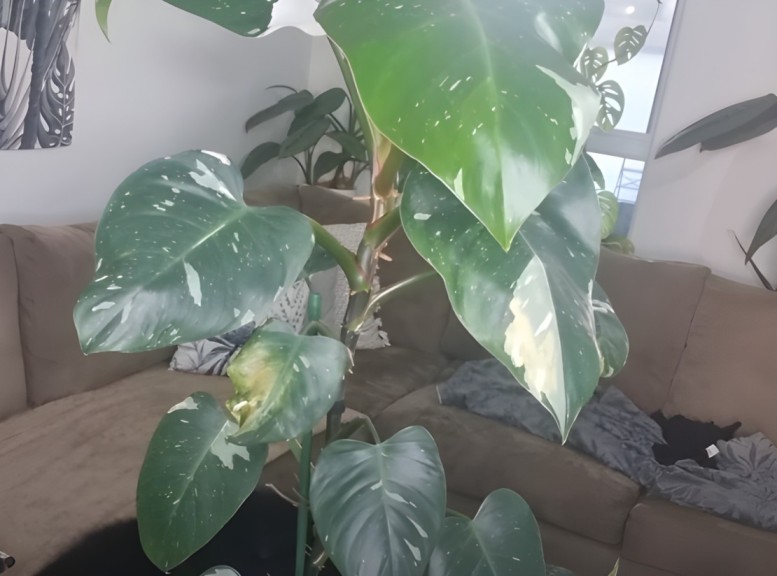
Flowering and Foliage
The glossy, heart-shaped leaves of the Philodendron White plant are known for their stunning foliage, which comes in colors of green and white.
Any room is given a touch of elegance by its gorgeous variegation. Although it is largely recognized for its beautiful foliage, it rarely blooms inside.
This easy-to-care-for houseplant is a great option for both novice and seasoned plant lovers since it flourishes with little work, making it an ideal addition to your indoor garden.
Philodendron White-Princess Appearance
This plant has heart-shaped, green leaves with lovely pink variegation, giving it a graceful look. Any indoor space is given a touch of natural charm by its thick greenery.
Plant aficionados like this plant because of its distinctive pink accents, which provide a pleasing contrast to the rich green surroundings.
It is the ideal ornamental option for both homes and businesses due to its small size and appealing appearance.
Philodendron WhitePrincess Fragrance
Although Philodendron WhitePrincess is prized for its luxuriant looks, it lacks a discernible scent. It’s crucial to remember that while its exquisite design and pink-accented leaves make it a popular indoor plant, it won’t offer any smells to your room.
Instead, it is a popular option for people looking for an aesthetically pleasing addition to their indoor gardens because of its wonderful sights.
Philodendron white princess vs white wizard
A stunning plant called Philodendron White-Princess has wide leaves with eye-catching white variegation.
In contrast, the creamy white streaks on the deep green leaves of the Philodendron White Wizard display a more detailed design.
While both have a captivating attraction, White Princess delivers a bolder, cleaner appearance, and White Wizard’s variegation gives your indoor jungle a bit of mystery.
Any plant fan will be charmed by these unusual Philodendron types.
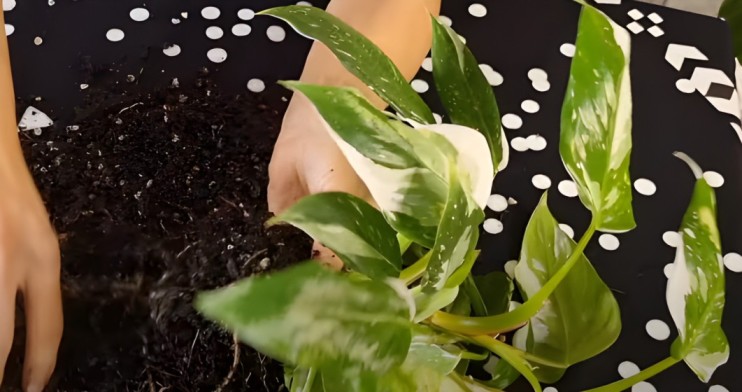
Philodendron white-princess vs white knight
Both White Princess and White Knight Philodendrons are magnificent in their own right. With their brightly colored variegated leaves, they are an absolute treat.
White Princess steals the spotlight with bursts of creamy white, while White Knight stands out with a striking juxtaposition of dark and light.
Underwatering
This plant stress and withering might result from underwatering. This adorable houseplant requires frequent watering.
When the top inch of soil seems dry to the touch, don’t forget to inspect it and water. A lack of water can result in fading leaves and reduced development.
By giving your White Princess the proper quantity of water and keeping the appropriate moisture level, you can make sure she stays vibrant and healthy.
Overwatering
It might be problematic to over water your Philodendron White Plant. Over watering causes the roots to suffocate, which results in root rot and fading leaves.
Between watering, the top inch of soil must completely dry out to maintain a proper balance of moisture and air for the health of the plant. To ensure that your White Princess survives, exercise caution when watering it.
Overwintering
To maintain the health of your Philodendron White Pplant throughout the colder months, you must overwinter it. As the weather becomes colder, bring your plant indoors and place it in a warm, well-lit area.
Reduce the amount of time between watering and allow the soil somewhat dry. Be on the lookout for bugs. Your White Princess may continue to flourish and dazzle with its brilliant pink leaves all year long if you give it the correct conditions and care.
Common Pests
Philodendron White-Princess is generally hardy, but it can face common pests like spider mites, mealybugs, or aphids.
Regularly inspect your plant for signs of these invaders, such as webbing or sticky residue. If you spot them, treat with a mild insecticidal soap to keep your White Princess pest-free and flourishing.

Plant Diseases
Common Pests: Look out for aphids, mealybugs, and spider mites. The leaves of White Princess Philodendrons may become infested with these small insects.
Fungal Diseases: Root rot and fungus problems might result from over-irrigation. Ensure adequate drainage to prevent damp soil.
Preventive Care: Check your plant frequently for indications of danger. A healthy White Princess Philodendron depends on early discovery and treatment.
Problems and Solutions
Problem: Yellowing leaves
Solution: Ensure appropriate drainage, check for over watering, and let the top soil dry in between watering.
Problem: Drooping or leggy growth.
Solution: Increase the indirect light intensity and clip lanky stems to encourage bushier growth.
Problem: Pest infestations (e.g., spider mites, mealybugs).
Solution: Increase indirect light intensity and clip lanky stems to encourage bushier growth.
Problem: Fungal diseases from excess moisture.
Solution: Increase circulation around the plant, lessen watering frequency, and improve drainage.
Problem: Wilting or yellowing due to root rot.
Solution: Repot in well-draining soil, trim affected roots, and adjust watering habits.
Toxicity of Philodendron White-Princess
Toxicity for Humans
Despite being an attractive houseplant, this plants is poisonous to people. When its sap comes into contact with the skin, it can irritate the skin and, if consumed, can induce swelling, pain, and gastric distress.
Wear gloves while handling this plant, keep it out of children’s reach, and get medical assistance if any symptoms appear.
Toxicity for Pets
Due to calcium oxalate crystals in its leaves, Philodendron WhitePrincess is poisonous to animals, notably cats and dogs.
Oral discomfort, drooling, nausea, vomiting, and, in extreme situations, more significant health problems can all result from ingesting this plant. To keep your pets safe, keep it out of their reach.
Varieties/Types
Popular cultivar Philodendron WhitePrincess is renowned for its eye-catching variegated leaves. There are no notable subgroups or variants within the “White Princess” variety, despite the fact that it is the most sought-after.
It is a favorite among lovers of indoor plants since it often has rich green foliage with pink or white highlights.
Uses of Philodendron White-Princess
- Philodendron White-Princess gives elegance to homes and offices when used as indoor decor.
- This plant aids in the air purification process by removing airborne pollutants.
- Ambience is improved by its rich green foliage, which also improves the overall appearance.
- Low Maintenance: Perfect for those who are busy; little maintenance is needed.
- White Princess is an alluring decorative shrub with lovely foliage.
White Princess Philodendron: A Unique Indoor Plant
The elegant and sought-after White Princess Philodendron, known for its stunning pink leaf accents, is a true gem in the world of indoor plants. Whether you’re a seasoned plant enthusiast or a novice looking for a unique addition to your collection, the White Princess Philodendron is a top choice.
It’s important to understand the key differences between this beauty and its cousins, like the White Knight or White Wizard. While the White Princess boasts a delicate allure with its pink leaf highlights, the White Knight stands out with its robust growth, making it a majestic counterpart.
However, those considering adding a White Princess to their indoor garden should be aware that it’s toxic to cats, so pet owners should exercise caution.
White Princess Philodendron: Tips Guide for Healthy Growth
When caring for a White Princess Philodendron, you must consider factors such as light requirements and humidity levels. Providing the right balance of light and humidity will ensure its vibrant growth and pink leaf display.
Regular watering and proper pruning are essential elements of its care routine, as they help maintain its lush appearance. If you’re looking to expand your collection or share the beauty of the White Princess with friends, you can learn how to propagate it with ease.
In the world of indoor plants, the White Princess Philodendron is a delightful choice that captivates with its pink allure and adds a touch of elegance to any space, whether it’s a cozy apartment or a spacious greenhouse.
Conclusion
In conclusion, the attractive variegated leaves and minimal maintenance care needs of the Philodendron White Princess set it apart and make it a popular option for interior design. Its well-being depends on you being aware of your individual care requirements, from lighting to watering.
The exquisite plant’s distinctive look, which includes rich green leaves with pink variegation, enhances any space’s atmosphere while also helping to purify the air.
However, be careful while handling it because it is hazardous to both people and animals. The Philodendron-White Princess will flourish if given the right care and natural beauty to your indoor garden.
FAQs
What sets Philodendron White Princess apart?
This plant is a popular houseplant because of its eye-catching variegated leaves, which features a mix of green and white.
What are the key care tips for Philodendron White Princess?
The main Key care tips for white Princess plant is the Best Light proper watering, proper fertilization, Timely pruning.
How should I care for Philodendron White Princess in terms of light?
To maintain it healthy and beautiful, place it near a window with filtered sunshine in bright, indirect light.
What’s the best approach to watering Philodendron White Princess?
To avoid root issues, water it seldom and let the top inch of soil dry before dehydrating.
How do I handle repotting Philodendron White Princes
Use a well-draining mix and delicate handling when repotting to prevent root damage every two to three years or when the plant outgrows its pot.
What should I do to encourage Philodendron White Princess to bloom?
Provide it with stable humidity levels, bright, indirect sunshine, fertiliser during the growing season, and pruning of dead leaves to encourage flowering.
Is Philodendron White Princess fragrant?
No, it doesn’t have a noticeable fragrance, but it’s prized for its stunning visuals.
How do I prevent common pests and diseases in Philodendron White Princess?
Watch out for typical pests like mealybugs and spider mites. Check for fungal illnesses brought on by overwatering. For plant health, early identification and treatment are essential.

